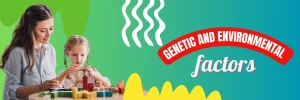Autism Spectrum Disorder (ASD) is a complex neurodevelopmental condition that affects how individuals communicate, interact with others, and experience the world around them. The term “spectrum” is crucial, as it signifies the wide range of symptoms and behaviours that can manifest, making each person’s experience with ASD unique.
Understanding the Spectrum
ASD encompasses a variety of challenges and strengths. Some individuals may have significant difficulties in communication and daily functioning, while others may possess remarkable skills in specific areas, such as mathematics, music, or art. This diversity means that support and intervention need to be tailored to each individual’s needs.

Key Characteristics of ASD
- Social Interaction Challenges:
Individuals with ASD may struggle to understand social cues, which can make social interactions feel overwhelming or confusing. They might find it difficult to make eye contact, interpret facial expressions, or engage in reciprocal conversations. - Communication Differences:
Communication abilities in individuals with ASD can vary widely. Some may be non-verbal, while others may have advanced vocabulary but still struggle with conversational skills. Echolalia, or the repetition of phrases, is also common. - Repetitive Behaviours and Routines:
Many individuals with ASD exhibit repetitive movements or behaviours, such as hand-flapping or rocking. They may also have a strong preference for routines and can become distressed if their routines are disrupted. - Sensory Sensitivities:
Sensory processing issues are often a significant aspect of ASD. Individuals may be hypersensitive (over-responsive) or hyposensitive (under-responsive) to sensory input, such as sounds, lights, textures, or tastes, leading to challenges in everyday environments.

Causes and Risk Factors
While the exact causes of ASD are still being researched, it is generally believed to result from a combination of genetic and environmental factors. Some known risk factors include:
- Genetics: A family history of autism or other neurodevelopmental disorders can increase the likelihood of ASD.
- Parental Age: Advanced maternal or paternal age at the time of conception may be linked to a higher risk.
- Environmental Influences: Prenatal exposure to certain environmental factors, such as toxins or infections, has been suggested as a potential risk.
Diagnosis of ASD
Diagnosis typically occurs in early childhood, often between the ages of 2 and 3, but can happen later as well. Healthcare providers conduct thorough evaluations, which may include:
- Developmental Screening: Regular assessments to monitor a child’s growth and developmental milestones.
- Behavioural Observations: Detailed observations of the child’s interactions and behaviours.
- Parental Reports: Interviews with parents to gather information about the child’s development and behaviours.
Treatment and Support Options
While there is no cure for ASD, a variety of therapies and interventions can help individuals thrive. Common approaches include:
- Behavioural Interventions: Techniques such as Applied Behaviour Analysis (ABA) can promote positive behaviours and help reduce challenges.
- Speech Therapy: To enhance communication skills and language development.
- Occupational Therapy: To assist with daily living skills, sensory integration, and motor skills.
- Social Skills Training: To help individuals improve their social interactions and build relationships.
Conclusion
Autism Spectrum Disorder is a multifaceted condition that impacts individuals in varied ways. Understanding the characteristics of ASD is essential for promoting awareness, acceptance, and effective support. Early diagnosis and tailored interventions can empower individuals with ASD to reach their full potential, leading to fulfilling and meaningful lives.
If you have questions about ASD or are seeking resources, don’t hesitate to reach out to healthcare professionals or support organisations. Together, we can foster a more inclusive and understanding environment for those on the autism spectrum.
Published on October 5, 2024
